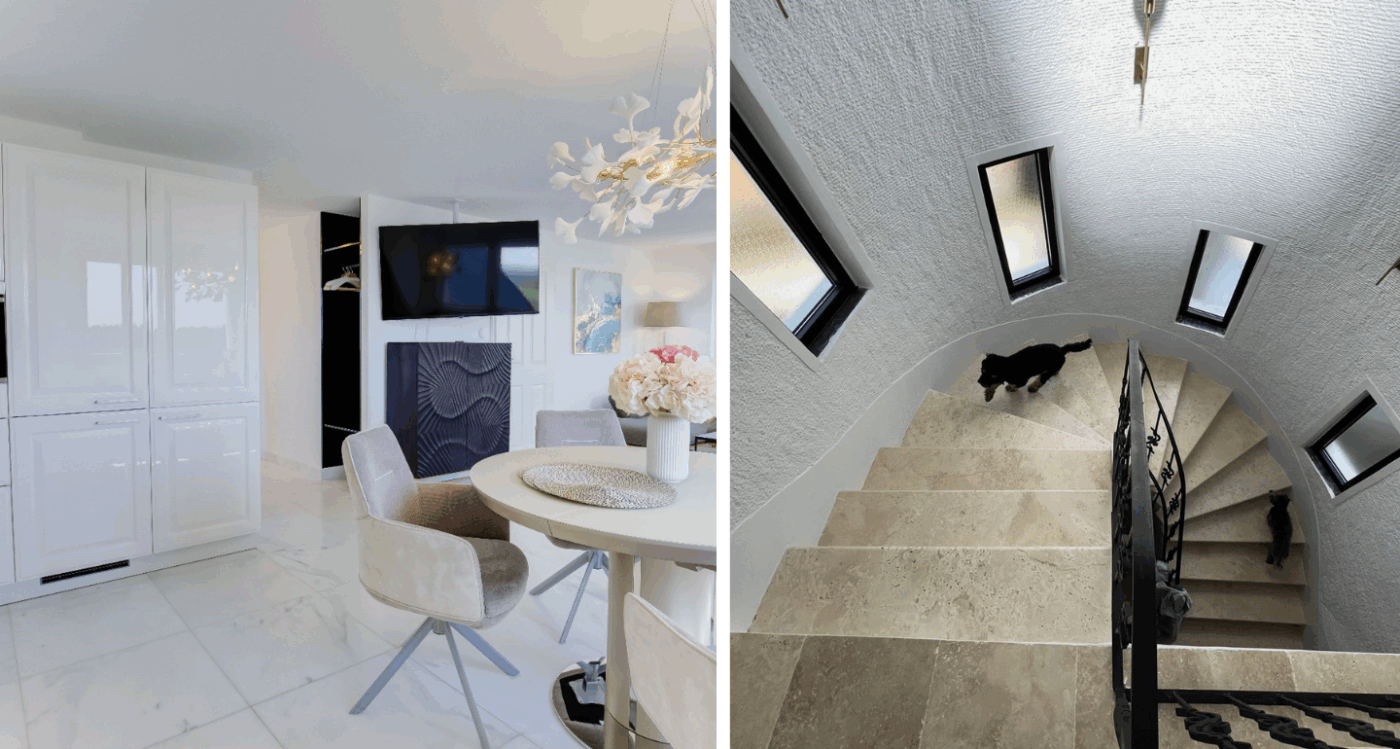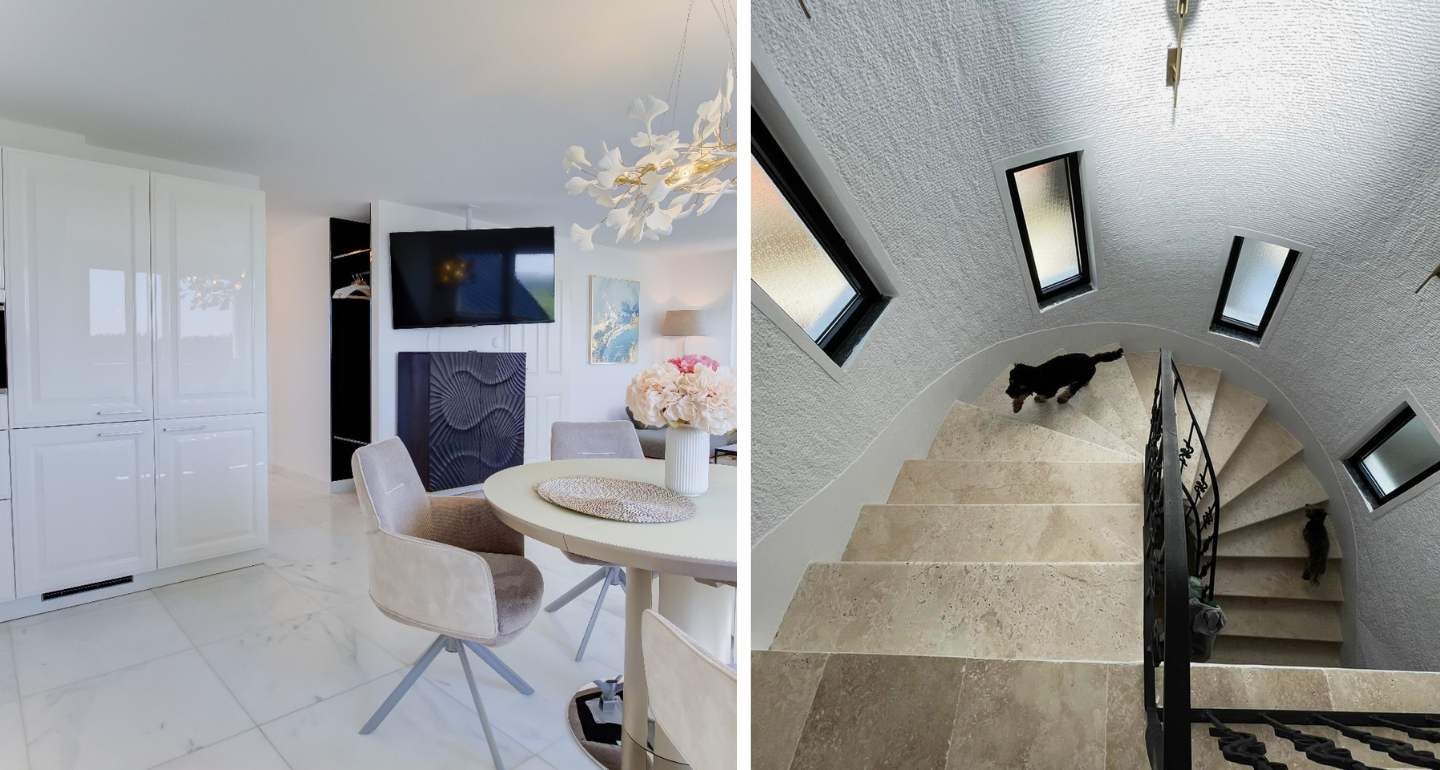Home decoration is a pleasant process where personal tastes and lifestyle come together, transforming your home into a special space for you. In this process, you can make the decoration of your home more attractive with some tricks.
Furniture Arrangement: Pay attention to the functionality of your furniture. Especially in small spaces, multi-purpose furniture can be a great choice. When arranging furniture, consider the flow of the room and the walkways. It’s important to keep pathways clear and place furniture groups in the right positions.
Lighting: You can create different atmospheres in a space by combining various types of lighting (ambient, task, and accent). For example, use ambient lighting on the ceiling, task lighting on desks or work surfaces, and accent lighting in the corners of the room.
Textiles and Textures: You can add depth and warmth to your space by using different textures and textiles. For example, cushions, rugs, curtains, and throws can bring variety. Balancing hard and soft surfaces creates a visually pleasing look. For instance, pairing solid wooden furniture with soft fabrics.
Art and Decorative Elements: To personalize your space, you can use various objects made from natural stones. Keeping decorative elements simple helps prevent the space from looking cluttered and creates a more organized atmosphere.
Color Palette: The color palette you use on the floors, walls, and furniture plays a significant role in personalizing your home decor.
Basic colors: For walls, floors and large furniture.
Accent colors: For small items, accessories and textiles.
You can achieve harmonious color combinations by using the color wheel.
Create Green Spaces: Plants are the easiest way to liven up any area. By choosing suitable plants for both indoor and outdoor spaces, you can bring a natural vibe to your home.
What Is the Importance of Flooring in Home Decoration?
Flooring is an important component of home decoration both aesthetically and functionally. When chosen correctly, it can greatly enhance the overall appearance of a space as well as the comfort of its use. Here are some key points explaining the importance and impact of flooring in home decoration:
Aesthetic Appearance: Flooring forms the foundation of a room’s overall design. The choice of color, texture, and pattern determines the general atmosphere of the space.
Coordination: Flooring should be compatible with wall colors, furniture, and accessories. A harmonious floor integrates with other elements in the space and creates an aesthetically pleasing look.
Functionality: Different areas require different types of flooring. For example, water-resistant and durable materials should be preferred in moisture-prone areas like the kitchen and bathroom. In spaces such as the living room or bedroom, softer and warmer flooring options may be more suitable.
Durability and Maintenance: The durability and maintenance of flooring are important depending on the frequency of use. In high-traffic areas, durable and easy-to-clean flooring materials are necessary.
Comfort: Flooring plays an important role in insulation against heat and sound. Carpets and certain special flooring materials can help retain warmth and reduce noise transmission.
Perception of Space: Flooring can influence how a space is perceived. Light-colored flooring makes a room appear larger and more spacious, while dark-colored flooring creates a warmer and cozier atmosphere.
Pattern and Color: Patterned flooring can add character to a space, while plain and simple flooring provides a more modern and minimalist look.
Design Flexibility: Choosing flooring according to the needs of the space provides design flexibility. For example, modular and interchangeable flooring can give the area a fresh new look.

Natural Stone Flooring
Natural stone flooring offers an elegant and lasting appearance in the home, but proper care and cleaning are necessary to ensure their longevity. When choosing, it is important to consider the purpose of the space, maintenance requirements, and how well it aligns with your aesthetic preferences.
Marble Flooring: Where Luxury Meets Durability
Marble is a stone that has been used for centuries in architecture and interior design, known for its natural beauty and durability. When used on floors, it provides spaces with both an aesthetic appearance and a long-lasting solution.
Advantages of Marble Flooring
Aesthetic Appearance: The natural patterns and colors of marble add a unique character to any space. It complements a wide range of interior styles, from classic to modern.
Durability: When properly maintained, marble floors are highly resistant to scratches, abrasions and stains.
Added Value: Marble flooring is a valuable investment that can increase the worth of a home or workplace.
Hygiene: Its porous structure helps prevent the growth of bacteria, and it is easy to clean.
Thermal Insulation: As a natural cooling material, marble provides a cool flooring surface, especially beneficial in warm climates.
Granite Flooring
Granite flooring is an excellent choice for interior floors due to its durability, aesthetic appeal, and low maintenance requirements. With a variety of surface finishes and color options, it can complement any interior design style. While granite requires careful attention during installation and maintenance, it offers long-lasting beauty and performance.
Advantages of Granite Flooring
Durability and Longevity: Granite is naturally hard and durable, making it ideal for high-traffic areas. It is resistant to scratches and impacts.
Aesthetic Variety: Granite comes in a wide range of colors and patterns, allowing it to match any interior design style. Its natural veining and color variations provide a visually appealing look.
Low Maintenance Requirements: Granite is easy to clean and its water-resistant properties make it less prone to staining. It is typically cleaned with soapy water and a soft cloth.
Sealing: Granite surfaces can be protected with sealants, ensuring they remain durable and long-lasting.
Travertine Flooring
Travertine flooring offers a natural and warm look, is durable and low maintenance. Thanks to its aesthetic diversity and application flexibility, it adapts to various interior designs. It offers a long-lasting and stylish flooring option with proper maintenance and sealing applications.
Travertine Flooring Types
1)Natural Travertine: It is characterized by its natural texture and holes. Different aesthetics can be achieved with various surface treatment methods. It can be used indoors in areas such as living rooms, bathrooms and kitchens.
2) Polished Travertine: Has a shiny and smooth surface. It provides a luxurious look aesthetically. It is preferred for indoor areas that require a luxurious and elegant appearance. However, it can be slippery and may require careful use.
3) Honed Travertine: Has a matte and smooth surface, providing non-slip properties. It is especially preferred in areas like bathrooms and kitchens to reduce the risk of slipping.
4) Tumbled Travertine: Offers a more natural and rough surface, providing a rustic appearance. It is used both indoors and outdoors, especially for outdoor walkways or around pools.
Click here for Modern Natural Stone Colors.

